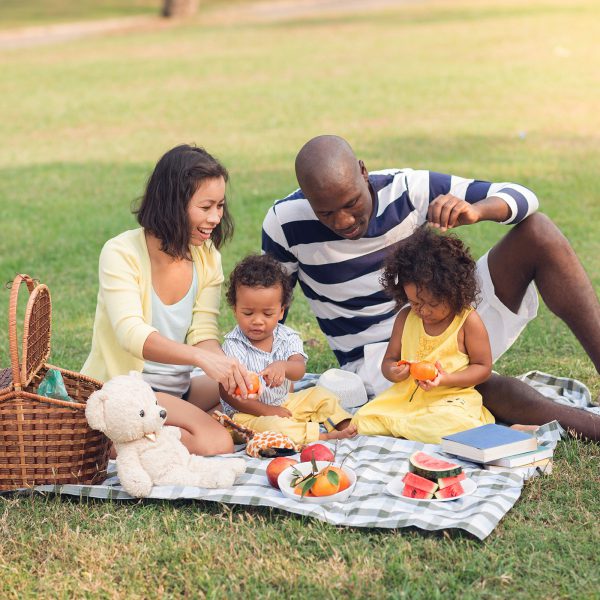Picnicking in the park? Partying on the patio? Barbequing in the backyard? You may be dining outdoors more this summer, especially as a precaution against COVID-19. When you go, pack your hand sanitizer for before and after the meal for those occasions when you can’t wash your hands. You’ll also need to bring along some food safety know-how because bacteria – the kind that can grow on food and make you sick – may also be present.
Cool Rules
Hot summer days call for cool and refreshing meals: salads, fresh fruits and vegetables, cold chicken, meat sandwiches. Bacteria love warm weather too, so prepare and pack these meals with care.
- Wash your hands before beginning any food preparation.
- Wash cutting boards, dishes, utensils and countertops with hot water and soap after preparing each food item and before moving on to the next food group. Make sure to use separate cutting boards for meat.
- Rinse fresh fruits and vegetables, including those with skins and rinds that will not be eaten, under cool running tap water.
- Once food is prepared, don’t let it sit out in warm temperatures for very long. Either store it in the refrigerator or pack it in an insulated cooler. Add sufficient ice or ice packs to the cooler to keep the food at 40 degrees Fahrenheit.
- Take-out foods, such as deli potato salad, coleslaw or baked beans, should be eaten within two hours of picking them up. Otherwise, purchase them in advance and chill thoroughly, then transport in a cooler and reheat those that should be hot just before eating.
- When it’s time to eat, don’t let food sit out in the hot sun for very long. Choose a shady place to eat or keep the cooler close at hand.
The Thrill of the Grill
Food safety practices extend to the grill.
- Marinate meat, fish and poultry in the refrigerator. If you plan to baste with this same marinade, boil it to destroy bacteria. Be sure to discard what’s left over. Have fresh marinade on hand to use on cooked food.
- Preheat the grill for 20 to 30 minutes or until the coals are lightly coated with ash.
- Use a food thermometer to ensure that food reaches a safe internal temperature. For the most accurate results, use an instant-read digital thermometer, not a large-dial food thermometer. Hamburgers and all pork should be cooked to 160 degrees Fahrenheit; Poultry must reach a temperature of 165 degrees Fahrenheit; Roasts, steaks and other large cuts of beef should be cooked to at least 145 degrees Fahrenheit (medium rare); Fish should be opaque and flake easily.
- Put grilled food on a clean platter. Don’t return it to the same plate that held the raw food.
- Burn off any cooked-food residue, and then clean the grill before its next use.
At Home or On-the-Go
Bacteria have no favorite dining spots. They’ll happily follow you wherever you go.
- Picnic tables are busy breeding grounds for germs. At home, clean the surface with soap and hot water. Pack disinfectant wipes to quick-clean public picnic tables.
- Leftovers should be refrigerated within two hours after cooking or serving. Anything left out longer should be discarded.
- Wash hands before and after eating. In case there’s no running water, pack a hand gel sanitizer or hand-cleaning wipes. Since food eaten outdoors tends to be messy, keep hand wipes close by even when dining alfresco at home.


For picnicking at public sites, bring a vinyl tablecloth to cover the table.
Easy to clean, doesn’t take up much space and is reusable.